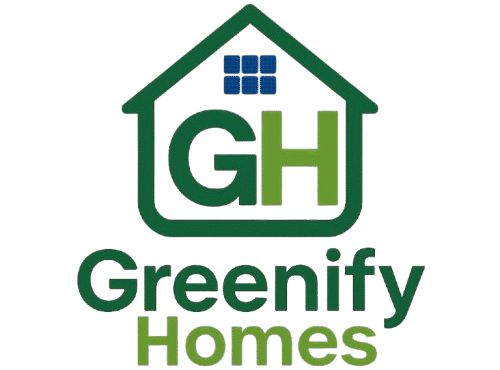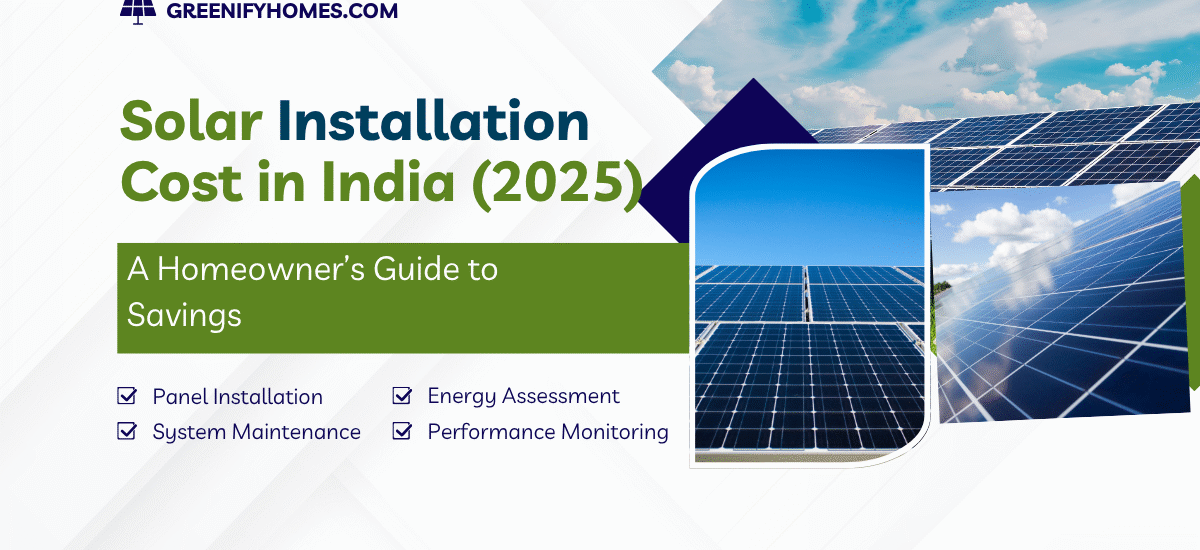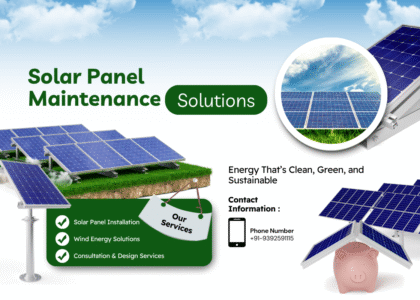Introduction
Thinking about installing solar panels at home in 2025? You’re not alone! With power bills rising and the government offering attractive subsidies, thousands of Indian homeowners are switching to solar.
This guide will walk you through everything you need to know — from installation costs to savings, subsidies, and whether it’s worth doing it yourself or hiring a pro.
Key Components of a Solar System
Before we get into the numbers, let’s break down what you’re actually paying for:
- Solar Panels: The heart of the system, capturing sunlight.
- Inverter: Converts DC electricity from the panels into usable AC power.
- Mounting Structure: Holds the panels in place, typically on your rooftop.
- Wiring & Connectors: Transfers power throughout the system.
- Installation Charges: Labor, scaffolding, and setup fees.
Types of Solar Systems
Grid-Tied System
- Connected to the local electricity grid
- Great for homes with consistent power supply
- Cheaper and eligible for net metering
Off-Grid System
- Works independently of the grid
- Includes battery storage
- Useful in rural or power-deficient areas
Hybrid System
- Combines grid connection with battery storage
- Offers flexibility and backup power
- Higher upfront cost but more control
Average Cost of Solar Panel Installation in India (2025)
| System Size | Approx. Cost (₹) | Cost per Watt (₹) |
|---|---|---|
| 1 kW | ₹60,000 – ₹75,000 | ₹60 – ₹75 |
| 3 kW | ₹1.5L – ₹2.1L | ₹55 – ₹70 |
| 5 kW | ₹2.5L – ₹3.5L | ₹50 – ₹65 |
| 10 kW | ₹4.5L – ₹6.5L | ₹45 – ₹60 |
Note: These are post-subsidy estimates for standard grid-tied systems.
Factors That Influence Solar Installation Cost
- Location: Costs may be higher in metros due to labor and logistics.
- Rooftop Type: Sloped or tiled roofs can increase installation complexity.
- Panel Quality: Monocrystalline panels are costlier but more efficient.
- Inverter Type: String inverters are cheaper than microinverters.
- Installer Choice: A reputed installer may charge more but offer better service.
Government Subsidies and Support in 2025
- MNRE Subsidy: Up to 40% on system cost for up to 3kW, and 20% for 4–10kW systems.
- State-Level Incentives: Additional rebates in Delhi, Gujarat, Kerala, and more.
- Net Metering: Sell excess electricity back to the grid and reduce your bills.
Visit Greenify Homes to check your subsidy eligibility and get a custom quote.
Cost Breakdown by System Size
1kW System
- Ideal for 1BHK homes or light usage
- Cost: ₹60,000 – ₹75,000
- Monthly savings: ₹900 – ₹1,300
3kW System
- Suitable for 2–3BHK homes
- Cost: ₹1.5L – ₹2.1L
- Monthly savings: ₹2,500+
5kW System
- Perfect for independent houses with ACs and appliances
- Cost: ₹2.5L – ₹3.5L
- Monthly savings: ₹4,000+
10kW System
- Best for villas, bungalows, or small businesses
- Cost: ₹4.5L – ₹6.5L
- Monthly savings: ₹7,500 – ₹10,000
Installation Process Overview
- Site Assessment: Installer evaluates roof strength and sun exposure.
- Quotation & Approval: You get a customized proposal.
- Installation: Takes 2–5 days depending on system size.
- Grid Connection: Net meter installed, system goes live.
Annual Maintenance & Hidden Costs
- AMC (Annual Maintenance Contract): ₹2,000 – ₹5,000/year
- Cleaning & Inspection: ₹300 – ₹500 per visit
- Battery Replacement (for off-grid systems): Every 5–7 years
How Much Can You Save with Solar?
Let’s keep it simple:
A 3kW system can save you ₹25,000 – ₹35,000 per year
Payback period: 4 to 6 years
Lifetime savings: ₹10 – ₹15 Lakhs
Top Tips to Reduce Installation Costs
- Opt for government-certified installers
- Choose local brands with strong service networks
- Avoid over-sizing your system — match your actual usage
- Apply for subsidies before installation
Solar Loans and EMI Options
Many NBFCs and banks now offer:
- Low-interest green loans
- 0% EMI for up to 12 months
- Pay-later options for solar rooftops
Ask your installer for tie-ups or partnerships.
Should You DIY or Hire a Professional?
DIY might save a few bucks, but:
- Safety risks are high
- You may void warranties
- Grid connection and net metering require licensed installers
Verdict: Go professional. It’s worth the peace of mind.
Conclusion
Installing solar panels is one of the smartest investments a homeowner in India can make in 2025. With falling prices, rising electricity bills, and attractive subsidies, now’s the time to make the switch. Whether you’re going green to save the planet or cut costs — the sun has got your back!
FAQs
1. Is there a subsidy on solar panels in India for 2025?
A. Yes, up to 40% on rooftop systems under MNRE guidelines.
2. What is the cost of a 3kW solar panel system in India?
A. Roughly ₹1.5 to ₹2.1 Lakhs after subsidy.
3. How long do solar panels last?
A. 25 to 30 years on average.
4. Can I run ACs and geysers on solar power?
A. Yes, with a system of 3kW or higher.
5. Is solar worth it in 2025?
A. Absolutely. You break even in 5 years and save for 20+ years.









